Hi What are the first 5 terms of the sequence an = 2n 1 = 1 = 3 = 5 = 7 = 9An = 52n1 haileysiidjd is waiting for your help Add your answer and earn points New questions in Mathematics the table shows the ur relationship between and y 0 1 2 1 4 w the relationship we denkbed by an equation of the form y = me b, what is the valeA geometric sequence is defined by the equation an = (2)5 − 2n 0 1172 1 A geometric sequence is defined by the equation an = (2)5 − 2n Part A What are the first three terms of the sequence?

Prove That 2n 1 N 2 N 1 3 5 2n 1 2n 1 Youtube
5-2n sequence
5-2n sequence-👉 Learn how to determine the first five terms of an arithmetic sequence A sequence is a list of numbers/values exhibiting a defined pattern A number/valueIn the sequence 2, 4, 6, 8, 10 there is an obvious pattern Such sequences can be expressed in terms of the nth term of the sequence In this case, the nth term = 2n To find the 1st term, put n = 1 into the formula, to find the 4th term, replace the n's by 4's 4th term = 2 × 4 = 8 Example What is the nth term of the sequence 2, 5, 10



Ex 9 1 5 Write First Five Terms An 1 N 1 5n 1 Ex 9 1
Solution for 52n The sequence {an } is given by the formula a, = (1)n1 32n1 Find a) az = b) az = c) az = d) a4 = Answered 52n The sequence {an } is given by the bartleby menuSolution for 52n The sequence {an } is given by the formula a, = (1)n1 32n1 Find a) az = b) az = c) az = d) a4 = Answered 52n The sequence {an } is given by the bartleby menuPrecalculus Sequences Infinite Sequences 1 Answer Don't Memorise Aug 31, 15 The first five terms are #color(blue)(9,13,17,21,25# Explanation #a_n=4n5# We can find terms #1 # to #5# by substituting #n# respectively in the expression #a_n=4n5# So, #a_color(blue)(1) = 4 *color(blue)((1)) 5=9#
👉 Learn how to determine the first five terms of an arithmetic sequence A sequence is a list of numbers/values exhibiting a defined pattern A number/valueAn=5⋅2n−1 Enter your answer in the box a5= 1 See answer xavierwilliams2 is waiting for your help Add your answer and earn points erato erato Answer The fifth term of the sequence is 49 Stepbystep explanationPlay this game to review Mathematics Here are the first five terms in a number sequence 7 10 13 16 19 Find the nth term of this sequence Preview this quiz on Quizizz Here are the first five terms in a number sequence 7 10 13 16 19 Find the nth term of this sequence Linear sequences 2 DRAFT 10th grade 0 times
Solution for T (n)=52n equation Simplifying T (n) = 5 2n Multiply T * n nT = 5 2n Solving nT = 5 2n Solving for variable 'n' Move all terms containing n to the left, all other terms to the right1 Prove that the sequence a n= 1 3 5 (2n 1) 2 4 6 (2n) converges Proof We will apply the monotone convergence theorem Note that since 2n 1 2nKnowing that a sequence is monotonic can be useful In particular, if we know that a sequence is bounded and monotonic, we can conclude it converges!
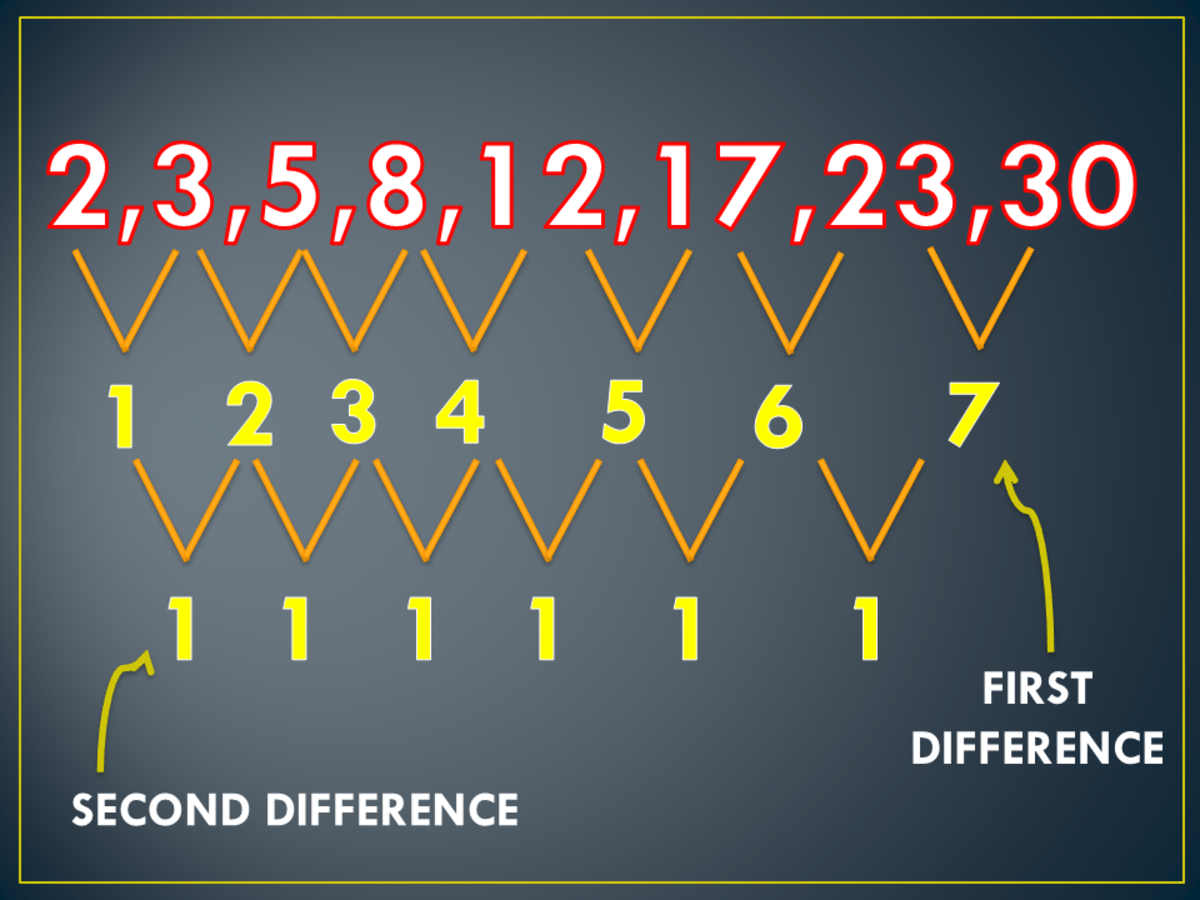


How To Find The General Term Of Sequences Owlcation Education
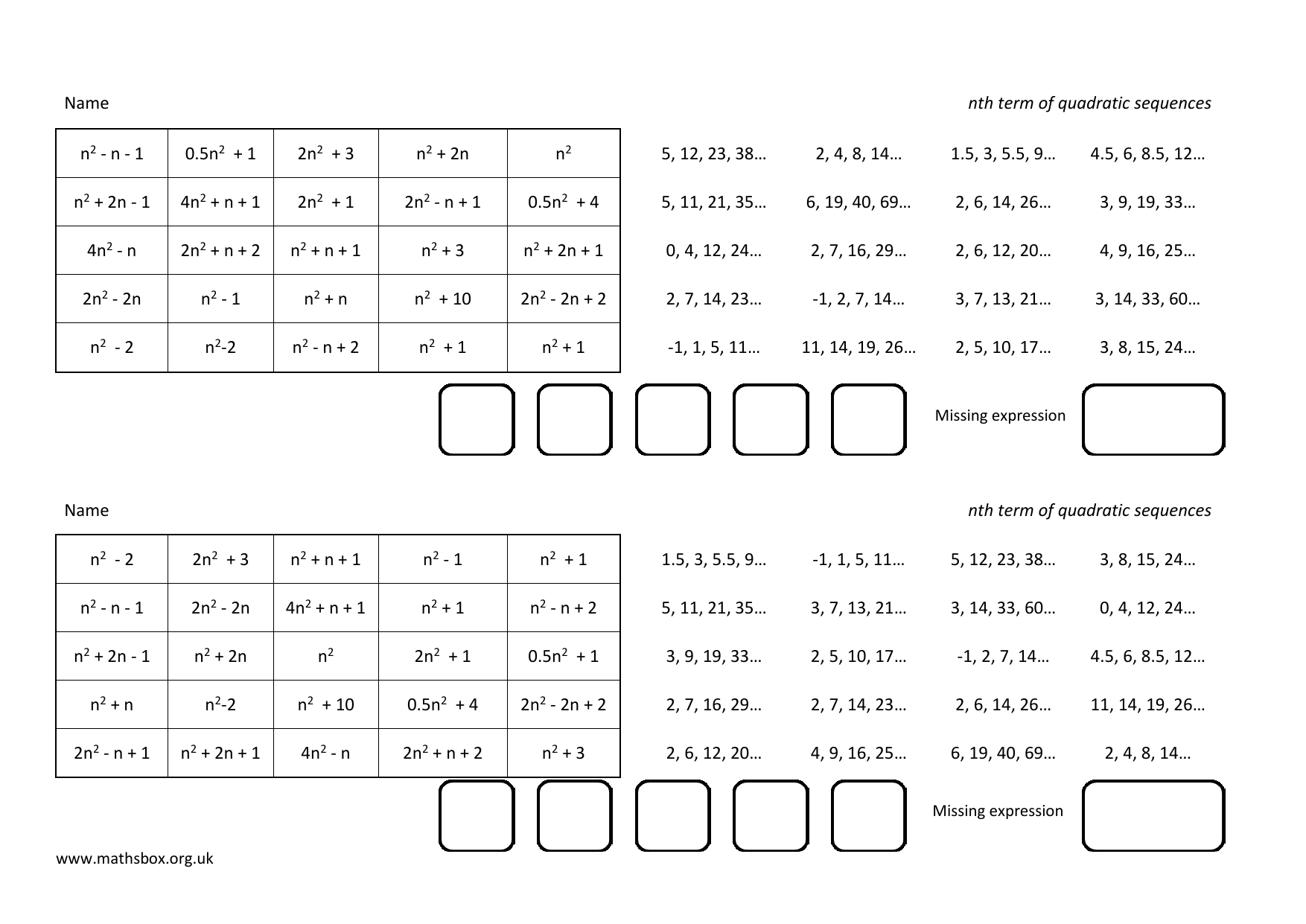


Name Nth Term Of Quadratic Sequences N2 N Manualzz
It is given that the mathn/mathth term of the sequence is represented by math2n1/math When we are asked to find the math5/mathth term, we can look at it as though math5/math has become mathn/math, allowing us to simply replacIn the given problem, we are given the sequence with the n th term `(a_n)` We need to show that these sequences form an AP a n = 5 2n Now, to show that it is an AP, we will find its few terms by substituting n =1, 2, 3Consider, for example, a sequence that is monotonically decreasing and is bounded below We know the sequence is always getting smaller, but that there is a bound to how small it can become
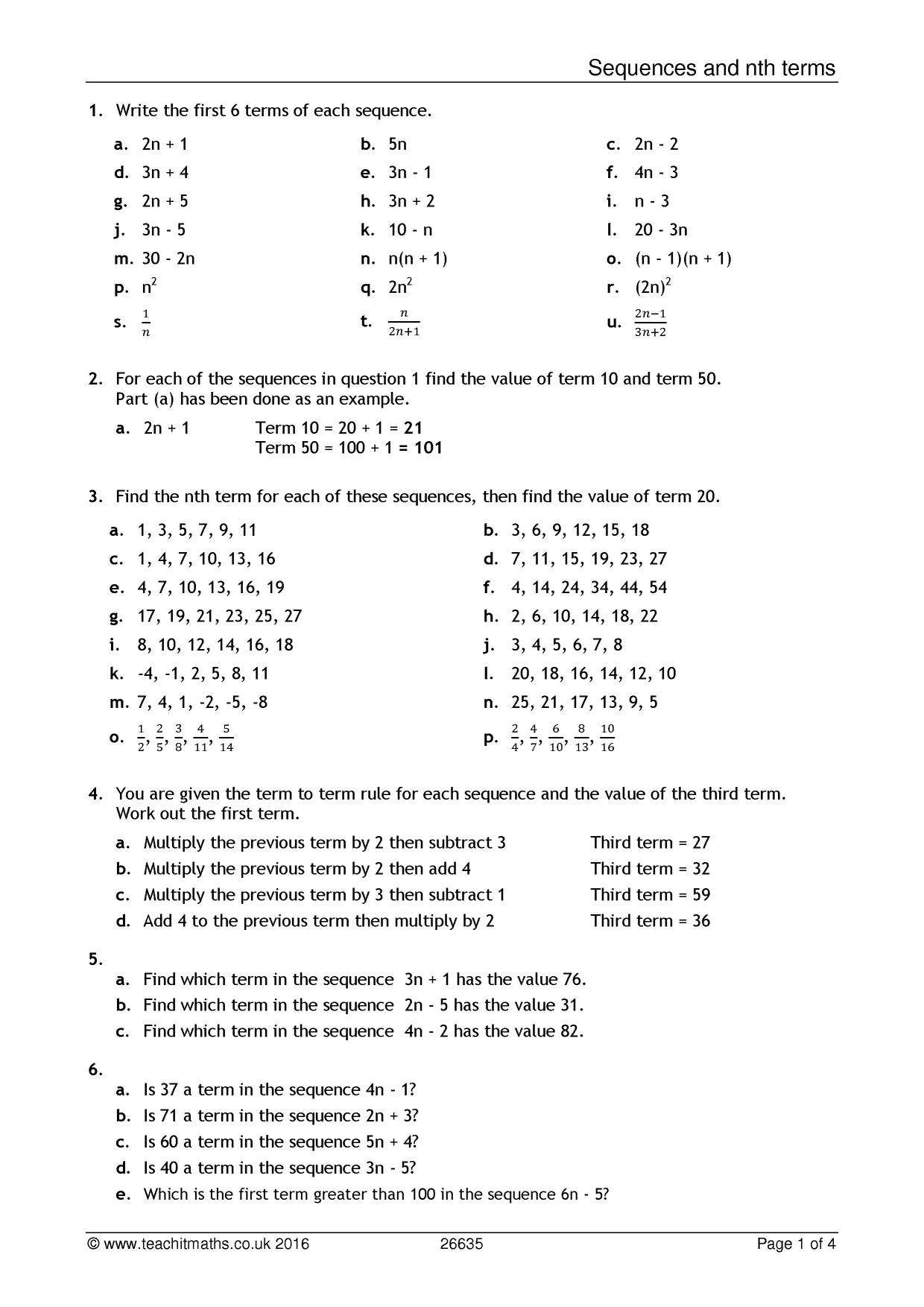


Sequences And Nth Terms Worksheet Pdf Teachit Maths



How To Show That The Sequence An 1 3 5 2n 1 N Either Converges Or Diverges Quora
5n = 2n 3nProve directly from the definition that the sequence $\left( \dfrac{3n^24}{2n^25} \right)$ converges to $\dfrac{3}{2}$ I know that the definition of a limit of a sequence is $a_n L < \varepsilon$ However I do not know how to prove this using this definition Any help is kindly appreciatedConsider the following finite sum written in sigma notation 5 2n 2n 1 n=1 a Identify the formula for the sequence of terms, an, for this sum an 2n 2n 1 b
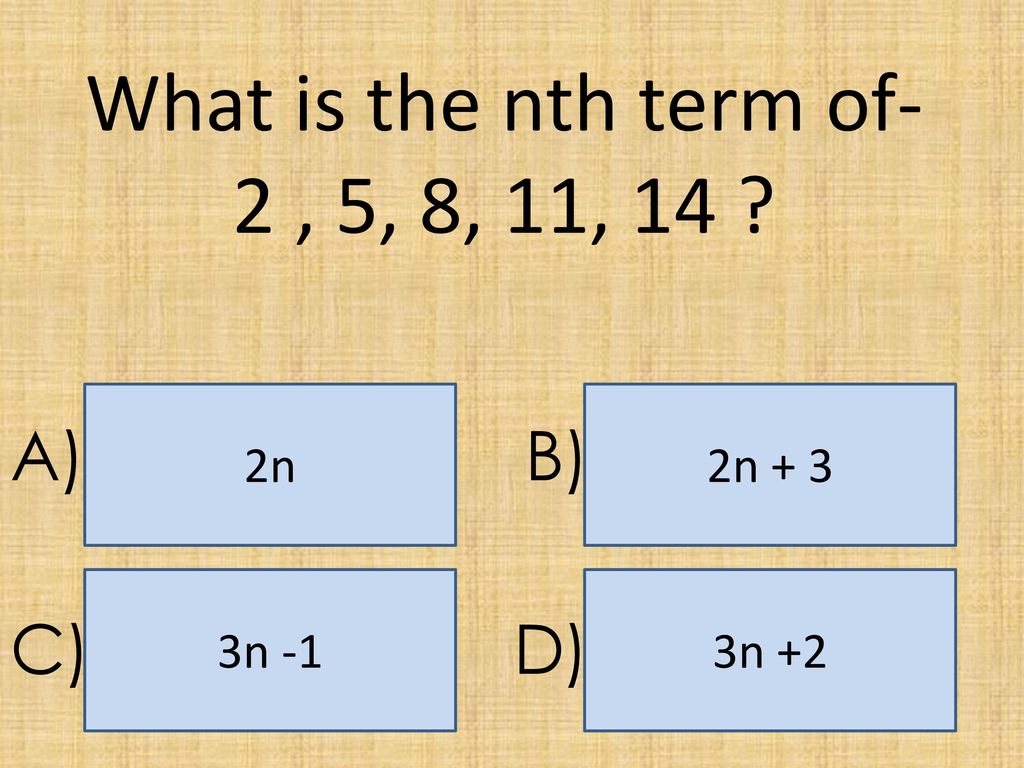


Quadratic Sequences Ppt Download



Write The Sequence With Nth Terms A N 3 4n Ii A N 5 2n A
2n sqaured is a term used in quadratic sequences, n sqaured is just the normal square numbers, so 2n squared is just them doubled Guest Oct , 16 Post New AnswerThat's one way of defining our sequence explicitly the limit of this as n approaches infinity is equal to 0 And it seems that way As n gets larger and larger and larger, even though the numerator oscillates between negative 1 and 1, it seems like it will get smaller and smaller and smallerYou have S sub 1, S sub 2, S sub 3 and you keep going so this would be the sum of the first term This would be the sum of the first 2 terms This would be the sum of the first 3 terms and just think about what happens to this sequence as n right over here approaches infinity because that's what this series is



If The Nth Term Of An Ap Is 2n 1 Then The Sum Of Its First Three Terms Is Youtube



Example 1 Write First 3 Terms I An 2n 5 Ii An N 3 4
Find the first five terms of the sequence with an = 5 2n Enter them in order (a1, a2, a3, a4, a5) 3, 1, 1, 3, 5, 2)Play this game to review Mathematics Here are the first five terms in a number sequence 7 10 13 16 19 Find the nth term of this sequence Preview this quiz on Quizizz Here are the first five terms in a number sequence 7 10 13 16 19 Find the nth term of this sequence Linear sequences 2 DRAFT 10th grade 0 timesQuestion What are the first 5 terms of the sequence an = 2n 1?



Find A Closed Form For The Generating Function For Each Of The Following Sequences An 5 2n Homeworklib



Find A Closed Form For The Generating Function For Each Of The Following Sequences An 5 2n 0 Homeworklib
(Use the appropriate test) Calculus Tests of Convergence / Divergence Strategies to Test an Infinite Series for ConvergenceSimplifying 2n 5 = Reorder the terms 5 2n = Solving 5 2n = Solving for variable 'n' Move all terms containing n to the left, all other terms to the right116 CHAPTER 4 SEQUENCES AND LIMIT OF SEQUENCES Proof Given >0, we can choose N such that n;m N=)ja n Lj< 2 and ja m Lj< 2 Now, ja n a mj= ja n L L a mj = j(a n L) (a m L)j j(a n L)j ja m Ljby the triangle inequality 2 2 = The above theorem simply says that if a sequence converges, then the dif



16 What Is The Nth Term Of The Sequence 25 125 625 3125 A 5



Find The Sum Of The First 15 Terms Of Each Of The Following Sequences Having Ten
How do you graph the arithmetic sequence #a_n=52n#?52n The Sequence 2) Un 31 N=2 O A Eventually Increasing O B Decreasing O C IncreasingExample 1, 2, 3, 4, 5
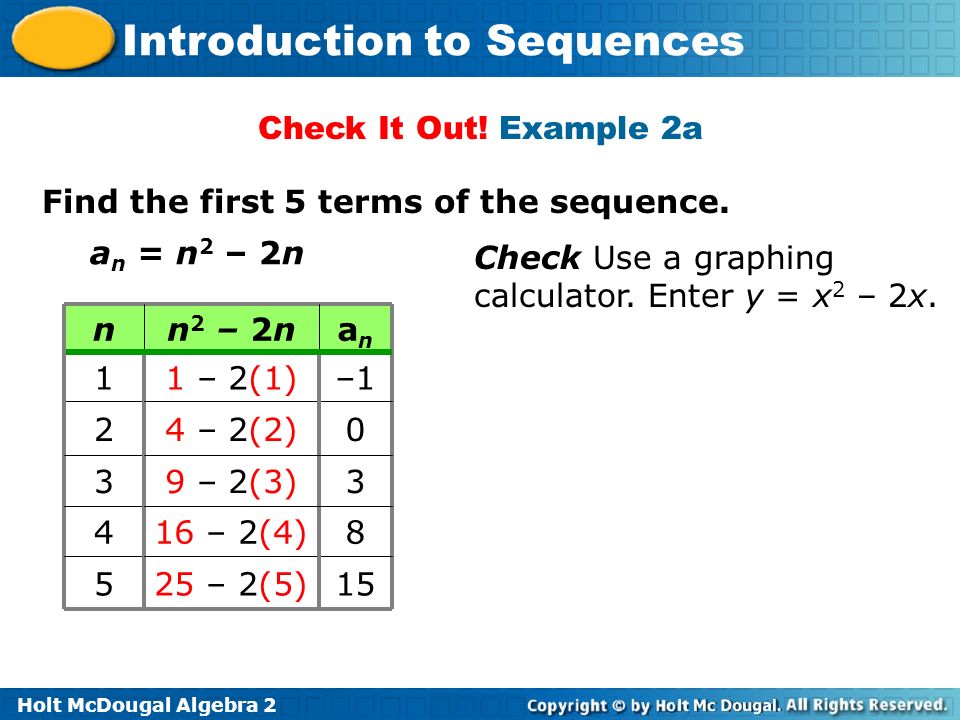


Objectives Find The Nth Term Of A Sequence Write Rules For Sequences Ppt Video Online Download



Prove That 2n 1 N 2 N 1 3 5 2n 1 2n 1 Youtube
Assume that n starts with 1 Answer by ewatrrr() (Show Source) You can put this solution on YOUR website!What is the fifth term of the sequence?Play this game to review Mathematics Here are the first five terms in a number sequence 7 10 13 16 19 Find the nth term of this sequence Preview this quiz on Quizizz Here are the first five terms in a number sequence 7 10 13 16 19 Find the nth term of this sequence Linear sequences DRAFT 10th grade 0 times



Convergent Divergent Geometric Series With Manipulation Video Khan Academy
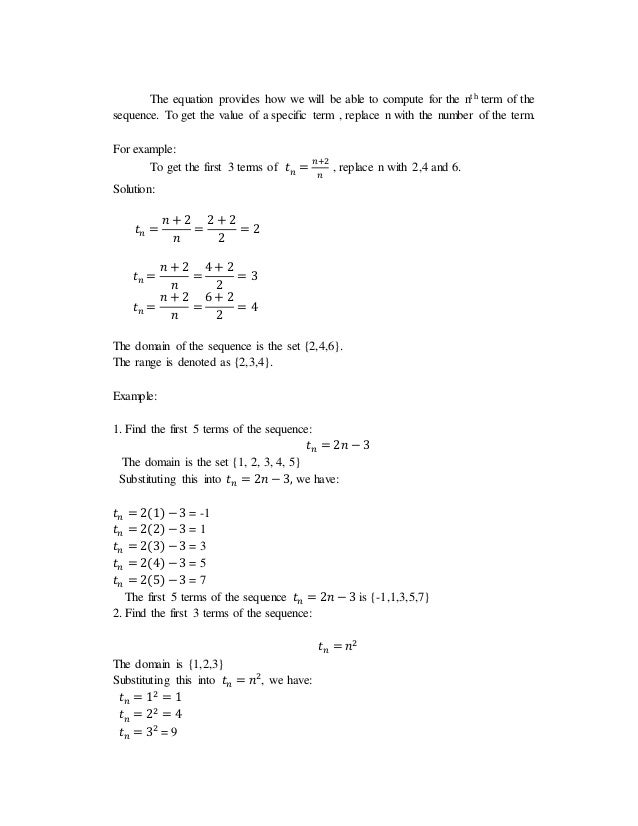


Sequence Function
What are the first 4 terms in the sequence 52n Get the answers you need, now!1 Prove that the sequence a n= 1 3 5 (2n 1) 2 4 6 (2n) converges Proof We will apply the monotone convergence theorem Note that since 2n 1 2n52n The Sequence 2) Un 31 N=2 O A Eventually Increasing O B Decreasing O C Increasing



Determining N In A Given Sequence Frac 1 3 5 2n 1 2 4 6 2n Frac 11 12 Mathematics Stack Exchange



Write The Second Term Of The Sequence T N 2n 1 Youtube
For the sequences in exercises 44 and 45, plot the first \( 25\) terms of the sequence and state whether the graphical evidence suggests that the sequence converges or diverges 44) T \( a_n=\sin n\) 45) T \( a_n=\cos n\) Answer Graph oscillates and suggests no limitLet's note math(a/mathmath_n)_{n \in \mathbb N^*}/math the sequence Notice that math\displaystyle 1 \times 3 \times 5 \times \ldots \times (2n1)=\frac{1To get the next term of a geometric sequence, you multiply the previous term by 'r'



Answered Determine Whether The Sequence Bartleby



Sum Of First N Terms Of The Arithmetic Sequence Is 3n 2n Find The Algebraic Form Brainly In
Simplifying T (n) = 5 2n Multiply T * n nT = 5 2n Solving nT = 5 2n Solving for variable 'n' Move all terms containing n to the left, all other terms to the rightFree Sequences calculator find sequence types, indices, sums and progressions stepbystep This website uses cookies to ensure you get the best experience By using this website, you agree to our Cookie PolicyIntroduction to bioinformatics, Autumn 07 143 Inferring the Past Phylogenetic Trees (chapter 12) l The biological problem l Parsimony and distance methods l Models for mutations and estimation of distances l Maximum likelihood methods



46 Term What 1 W Term 25 125 625 3125 Of The Sequence 49 If Sequence



Which Is The Largest Number In The Following Sequence 14 35 5 2n 1
What is the fifth term of the sequence?1Find the first 5 terms of the sequence an = 2n 5 Enter your answers separated by commas;Is a sequence, and X∞ i=1 1 2i = lim i→∞ 2i − 1 2i, that is, the value of a series is the limit of a particular sequence 111 Sequences While the idea of a sequence of numbers, a1,a2,a3, is straightforward, it is useful to think of a sequence as a function We have up until now dealt withfunctions whose domains
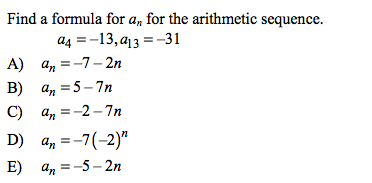


Solved Find A Formula For An For The Arithmetic Sequence Chegg Com
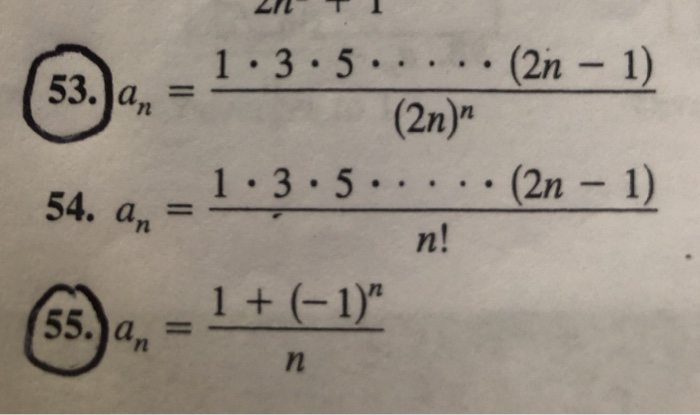


Solved Dertermine The Convergence Or Divergence Of The Se Chegg Com
In the given problem, we are given the sequence with the n th term `(a_n)` We need to show that these sequences form an AP a n = 5 2n Now, to show that it is an AP, we will find its few terms by substituting n =1, 2, 3Stack Exchange network consists of 176 Q&A communities including Stack Overflow, the largest, most trusted online community for developers to learn, share their knowledge, and build their careers Visit Stack ExchangeTranscript Example 1 Write the first three terms in each of the following sequences defined by the following an = 2n 5 We need to find first three terms ie a1, a2, a3 Given an = 2n 5 putting n = 1 in (1) a1 = 2(1) 5 = 2 5 = 7 Putting n = 2 in (1) a2 = 2(2) 5 = 4 5 Putting n = 3 in (1) a3 = 2(3) 5 = 6 5 = 11 Hence first three terms are 7, 9 and 11



Preliminary To Math Induction An Infinite Sequence Of Propositions



Sequences
Fibonacci Sequence A Fibonacci sequence is a sequence in which every number following the first two is the sum of the two preceding numbers The first two numbers in a Fibonacci sequence are defined as either 1 and 1, or 0 and 1 depending on the chosen starting pointIs the series #\sum_(n=1)^\infty((5)^(2n))/(n^2 9^n)# absolutely convergent, conditionally convergent or divergent?T (n) = 5 * 2n if that is a multiplication sign between the 5 and the 2 then yes We usually use * for multiplication on computers in writing we use x and sometimes a centered dot



How To Work Out The Nth Term Of A Decreasing Number Sequence One Which Goes Down M2ts Youtube
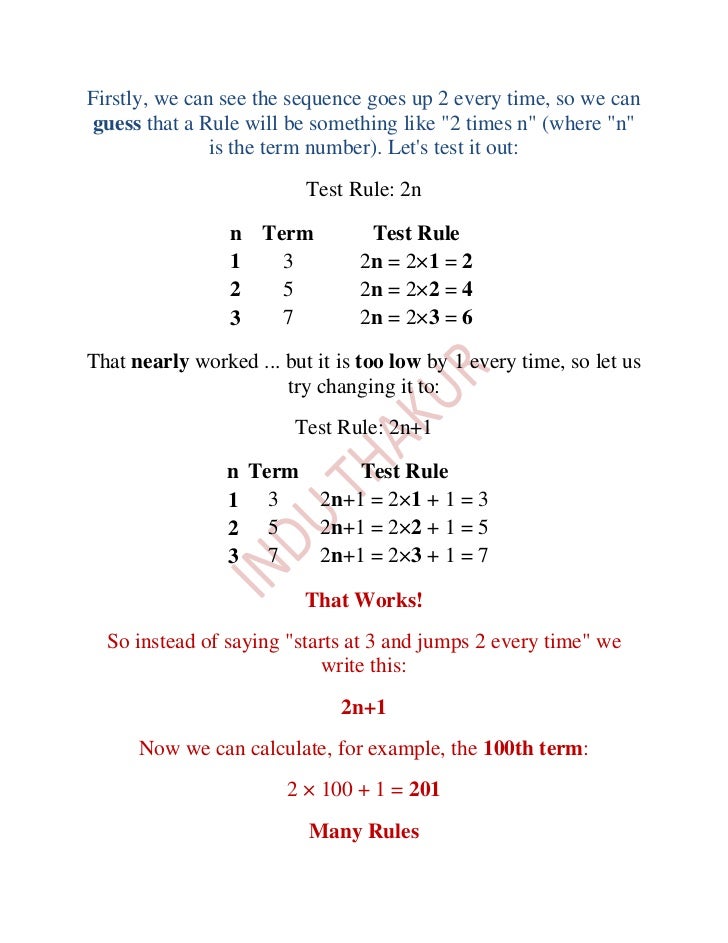


Arithmetic Sequences And Series 1
Introduction to bioinformatics, Autumn 07 143 Inferring the Past Phylogenetic Trees (chapter 12) l The biological problem l Parsimony and distance methods l Models for mutations and estimation of distances l Maximum likelihood methodsFree Sequences calculator find sequence types, indices, sums and progressions stepbystep This website uses cookies to ensure you get the best experience By using this website, you agree to our Cookie PolicyPART II SEQUENCES OF REAL NUMBERS II1 CONVERGENCE Definition 1 A sequence is a realvalued function f whose domain is the set positive integers (N)The numbers f(1),f(2), ··· are called the terms of the sequence Notation Function notation vs subscript notation f(1) ≡ s1,f(2) ≡ s2,···,f(n) ≡ sn, ··· In discussing sequences the subscript notationis much more common than



Ppt Quadratic Sequences Powerpoint Presentation Free Download Id



Solved Determine If The Sequence 1 3 5 2n 3 2n 1 X Chegg Com
2n sqaured is a term used in quadratic sequences, n sqaured is just the normal square numbers, so 2n squared is just them doubled Guest Oct , 16 Post New AnswerTranscript Example 1 Write the first three terms in each of the following sequences defined by the following an = 2n 5 We need to find first three terms ie a1, a2, a3 Given an = 2n 5 putting n = 1 in (1) a1 = 2(1) 5 = 2 5 = 7 Putting n = 2 in (1) a2 = 2(2) 5 = 4 5 Putting n = 3 in (1) a3 = 2(3) 5 = 6 5 = 11 Hence first three terms are 7, 9 and 11Precalculus Sequences Arithmetic Sequences 1 Answer sankarankalyanam Mar 17, 18 As below Explanation #y = mx c# is the standard form of slope equation of a line Given #a_n = 2n 5# Slope of the



Ex 9 1 5 Write First Five Terms An 1 N 1 5n 1 Ex 9 1



Quadratic Sequences Write The First Five Terms For The Following Sequences According To Its Nth Term 1 N 2 2 N N 2 N 4 2n 2 5 2n Ppt Download
Elements of the sequence can be identified by substituting the values of n in the expression 3n 5 0 0 1 3n5=2n7 subtract 2n on both sides n5=7 subtract 5 to the other side n=2 the answer to n is 2 Hoped that helped ( What is 2n plus 3n?It is given that the mathn/mathth term of the sequence is represented by math2n1/math When we are asked to find the math5/mathth term, we can look at it as though math5/math has become mathn/math, allowing us to simply replac
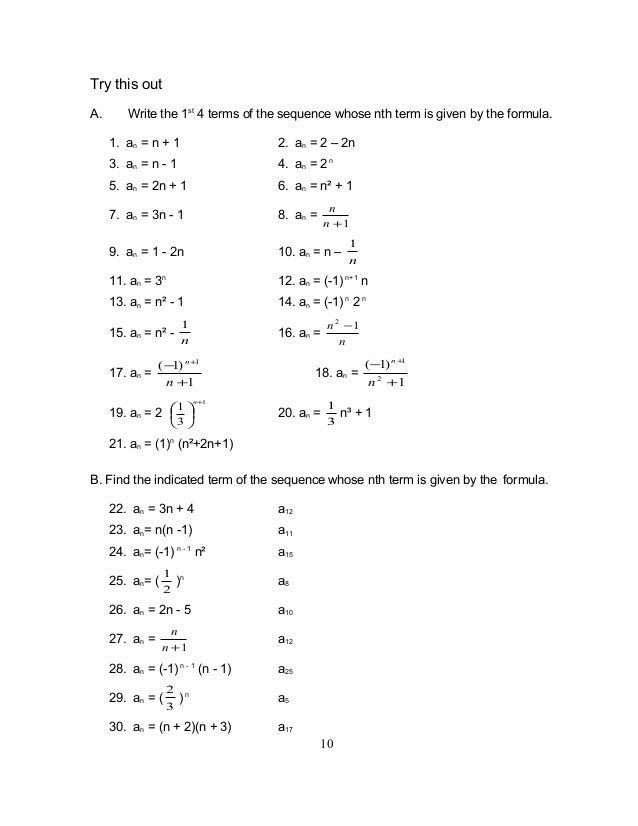


Grade 10 Math Module 1 Searching For Patterns Sequence And Series
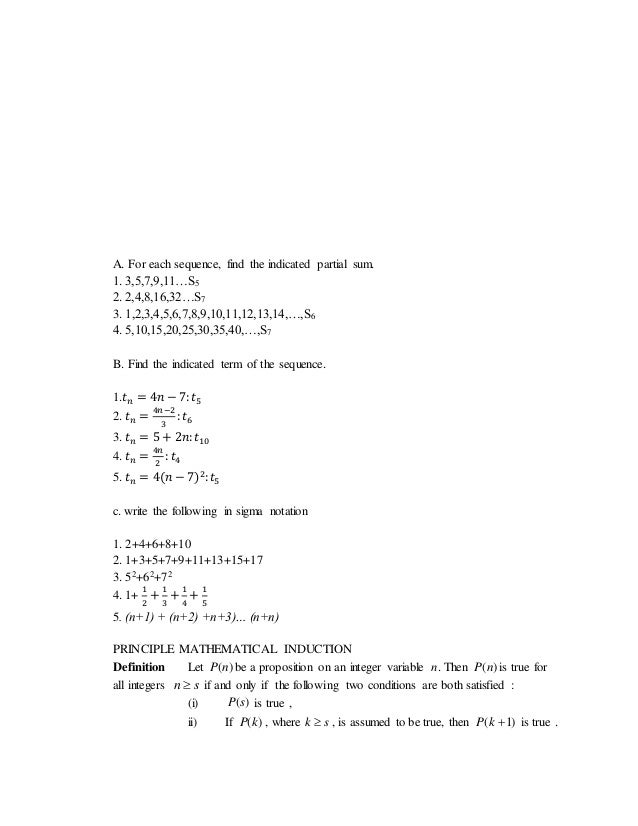


Sequence Function



How To Find The General Term Of Sequences Owlcation Education



Solved 5 2n The Sequence 3 N N 2 A Eventually Increasi Chegg Com



Answered 5 2n Determine If The Sequence 4 Bartleby



Solved Find The Limit Of The Sequence With The Given Nth Chegg Com
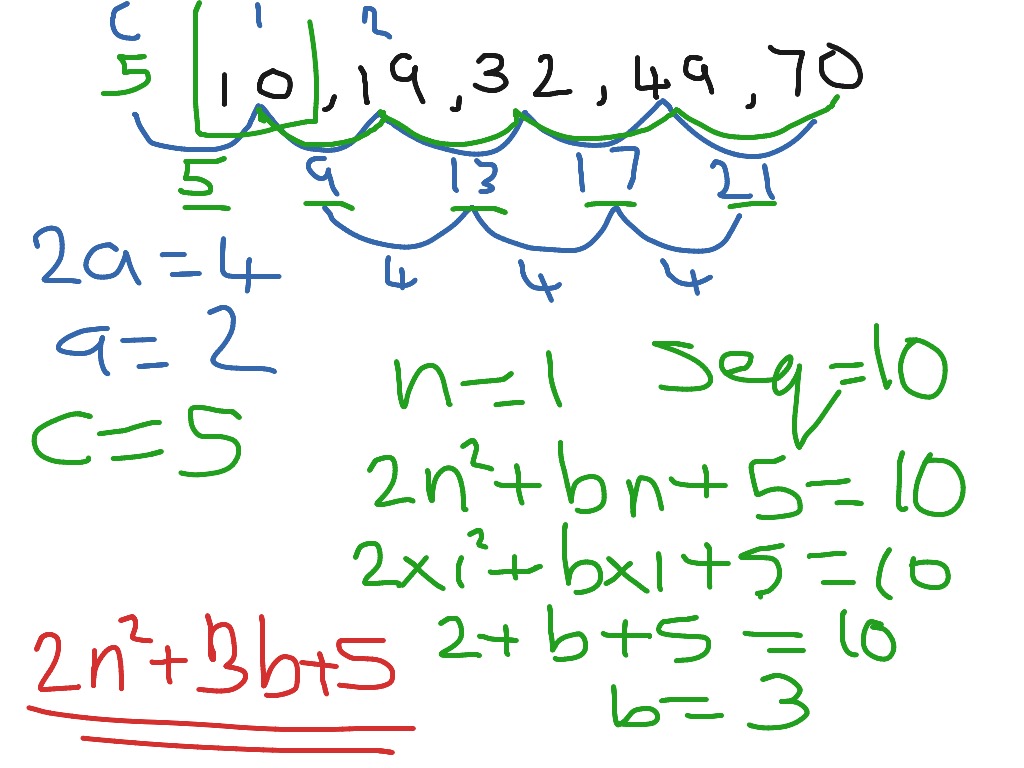


Nth Term Of A Quadratic Sequence Math Showme
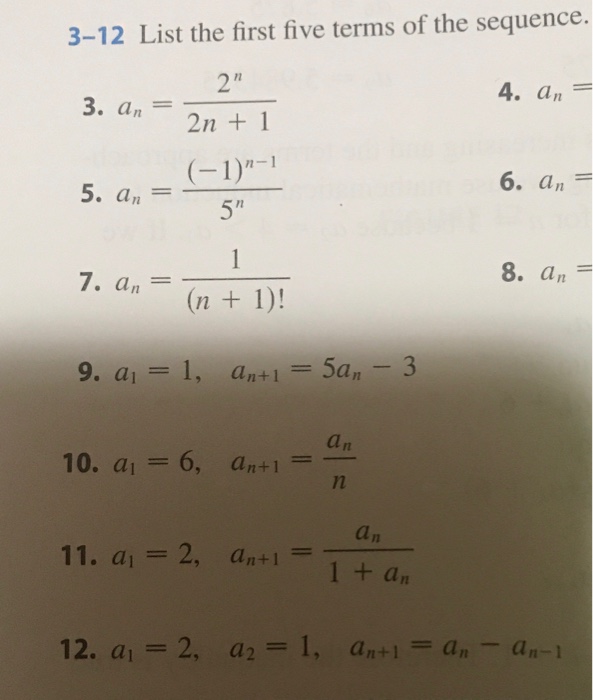


Solved 3 12 List The First Five Terms Of The Sequence 2 Chegg Com



Example 1 Write First 3 Terms I An 2n 5 Ii An N 3 4



The Nth Term S Cool The Revision Website



Find The Second And Third Term Of The Sequence Whose Nth Term Is Given By Tn 2n 5 Brainly In



1 What Is The Nth Term Of The Sequence 425 125 625 3125



How To Find The Sum Of An Arithmetic Sequence 10 Steps


What Are The First 4 Terms In The Sequence 5 2n Brainly In



Is Taun Term And The Common Dif 4 Write The Sequence With Nth Term I An 3 4n Ii An 5 2n Cibotol The



The Nth Term Of A Sequence Is A N 2n 3 Find Its First Four Te



Chapter 6 Sequences And Series Look At These Number Sequences Carefully Can You Guess The Next 2 Numbers What About Guess The Rule Ppt Download



Sequences



Position To Term Rules Maths Abc


Sequences
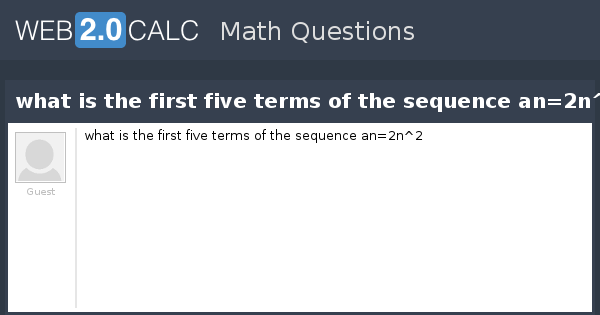


View Question What Is The First Five Terms Of The Sequence An 2n 2



Sequences And Series Exercise 9 4 Class Xi Breath Math



Linear Sequences Revision Ppt Download



Ex 9 1 4 Write First Five Terms An 2n 3 6 Chapter 9
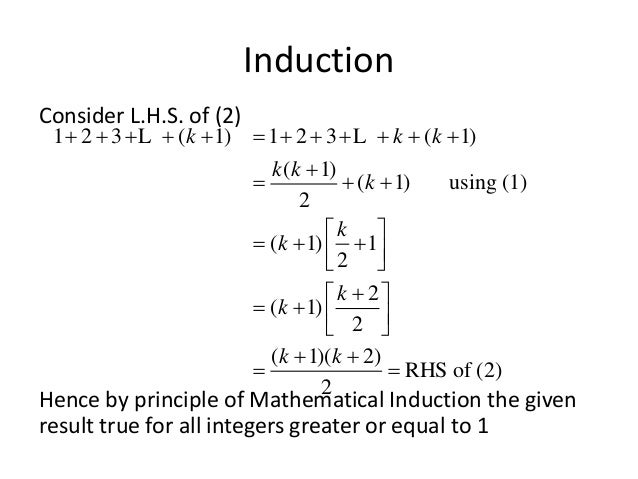


Sequences



If The Nth Term Of The Sequence Is 3 2n Then Find The Sum Of Its First Terms Brainly In
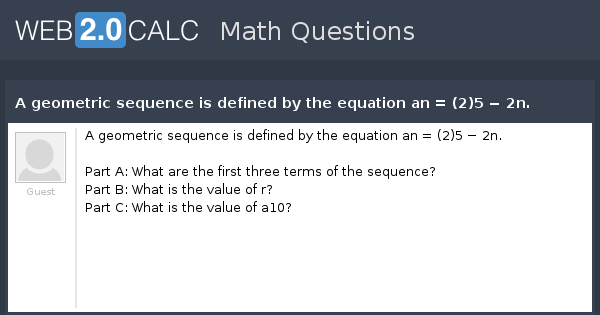


View Question A Geometric Sequence Is Defined By The Equation An 2 5 2n



Example 1 Write First 3 Terms I An 2n 5 Ii An N 3 4



Navigating The Nth Term Lesson And Worksheets Edplace



Is Taun Term And The Common Dif 4 Write The Sequence With Nth Term I



Find The First 5 Terms Of The Sequence Given The Nth Term1 A N 4 2 A 2n 13 A 12 3n4 A 35 Brainly In
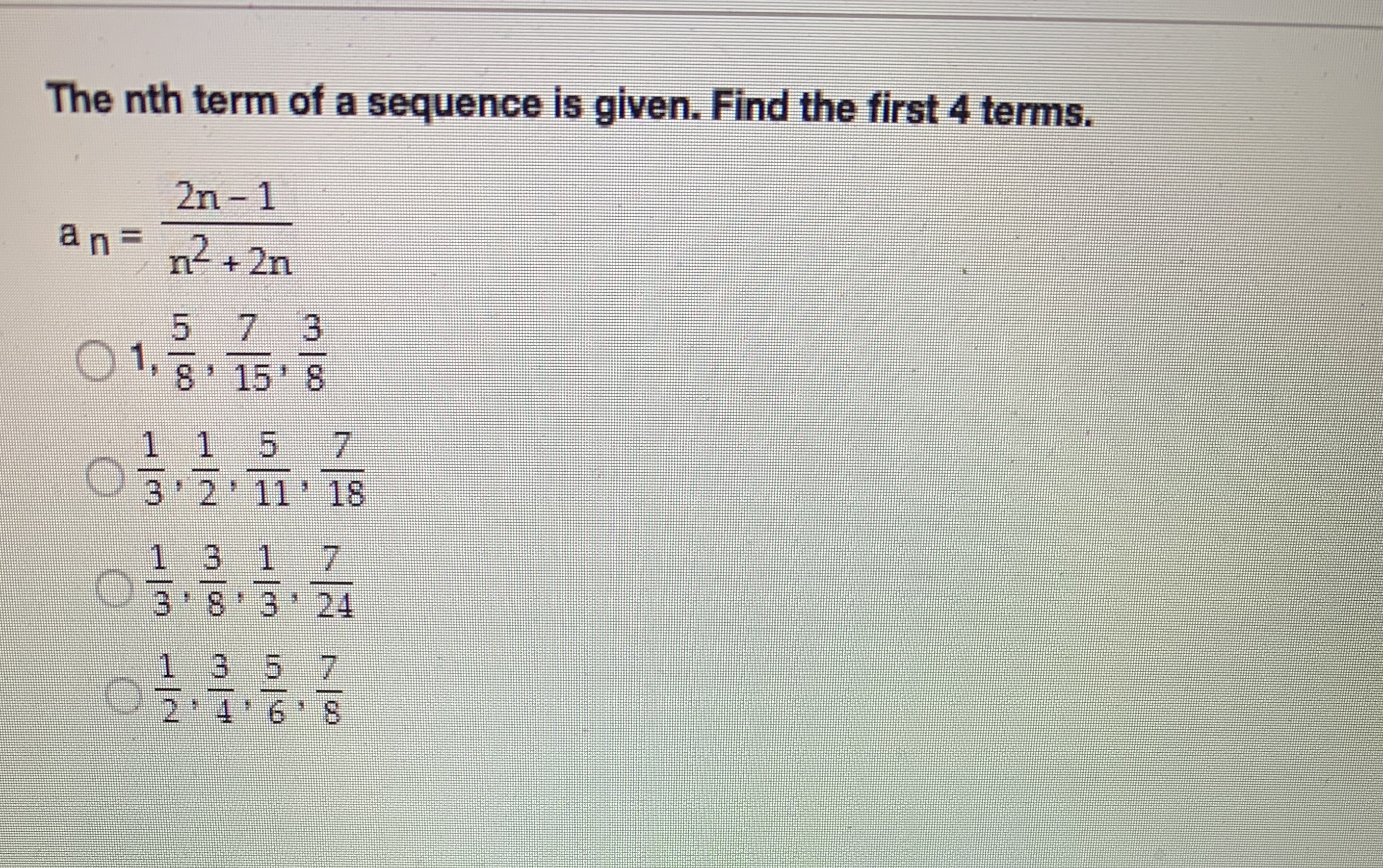


Answered The Nth Term Of A Sequence Is Given Bartleby



Sequences



What Is The Nth Term Of The Sequence 25 125 625 3125 A 5 2n


What Is The Nth Term Of The Series Whose Sum To N Terms Is 5n 2 2n Quora


Sequences



Solved Consider The Sequence With General Term An 2n Chegg Com



Solved 1 Point Let 6n An 5 2n For The Following Answe Chegg Com



Quantitative Aptitude Sequence And Series Sum Of An Ap Series To Get Value Of N Youtube



3 Prove That 1 3 5 2n 1 N 4 Let


The Nth Term Of A Series Is 2n 1 What Is The 5th Term Quora



For Each Sequence Find The First 4 Terms And The 10th Term A 12 N B 5 2n C N 2 3 D Brainly Com
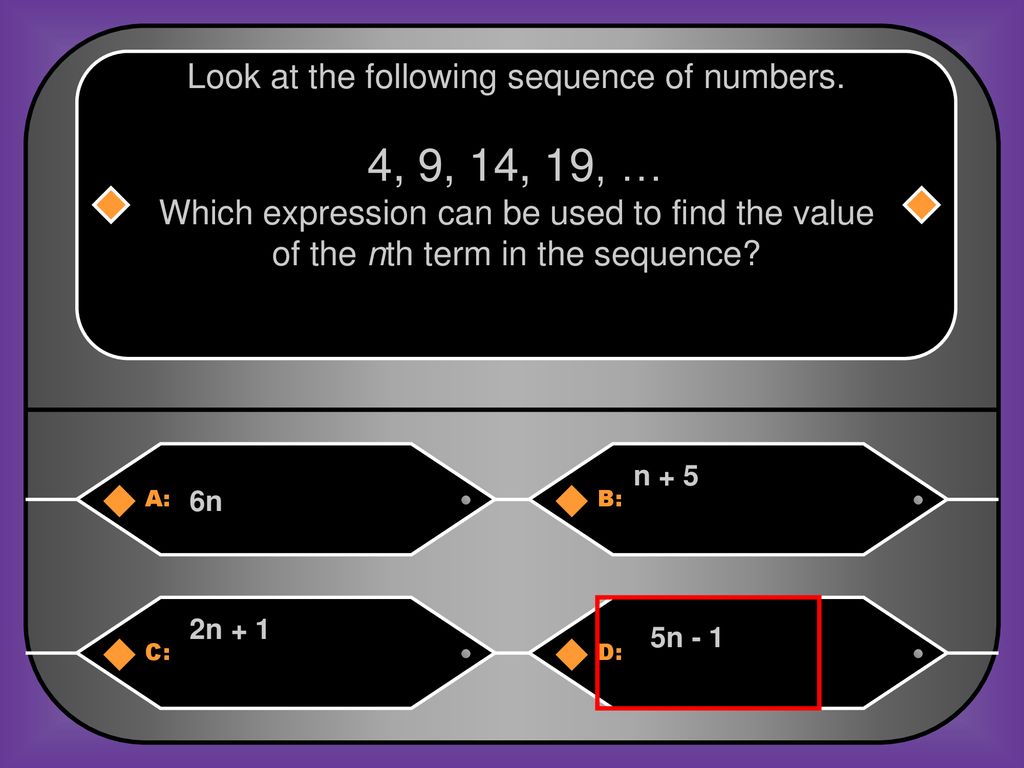


Which Description Shows The Relationship Between A Ppt Download



The Nth Element Of The Sequence 1 3 5 7 Youtube



4 8 Arithmetic Sequences



Pdf Prime Numbers Search Algorithms In Matrix Space



Ex 9 1 3 Write First Five Terms An 2n Chapter 9 Class 11



Rd Sharma Solutions For Class 11 Chapter 19 Arithmetic Progressions Download Free Pdf



Solved 3 3 14 Show That The Sequence Sn Converges Wher Chegg Com



Write The First Five Terms Of The Sequence An 2n 5
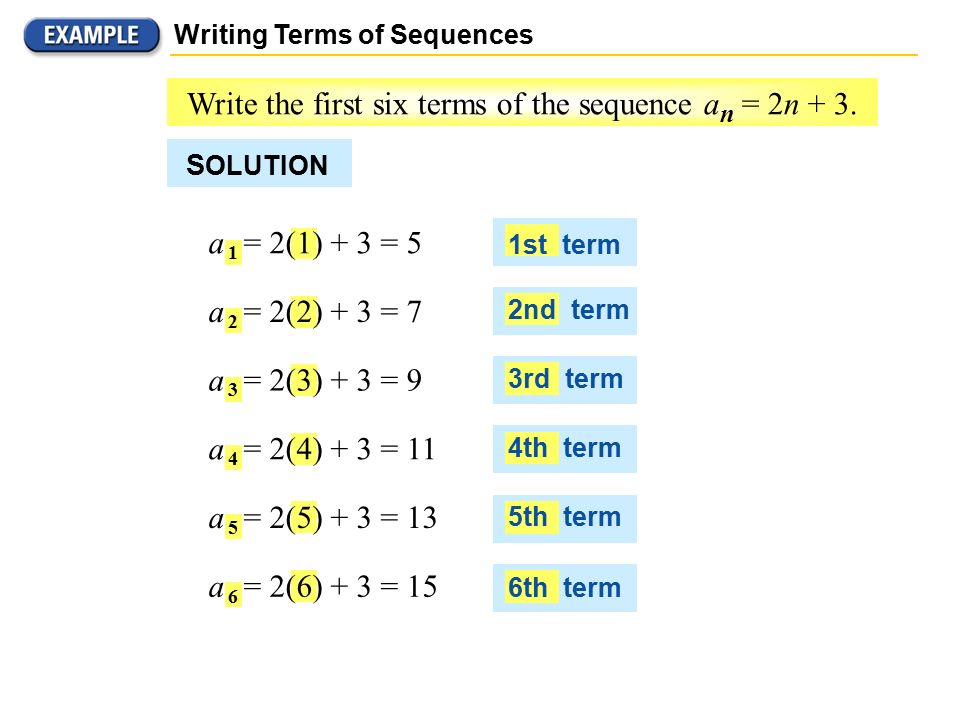


Chapter Sequences And Series Ppt Video Online Download



0 件のコメント:
コメントを投稿